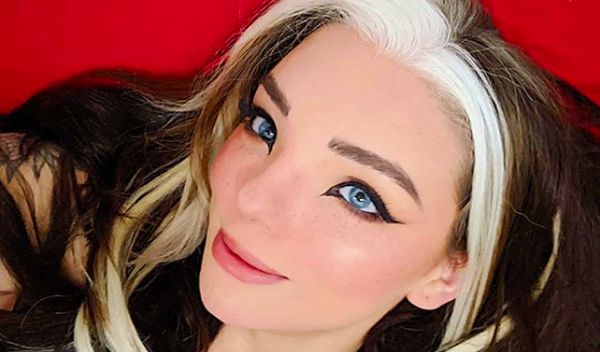
Stef Sanjati is an articulate advocate and activist for human rights and a survivor of bulimia, addiction, alcohol abuse, severe bullying and complex post traumatic stress disorder. She’s also a pansexual, trans woman born with Waardenburg Syndrome and is deaf in one ear. Simply put, she’s complicated.
Dressed in a stylish olive green and black outfit with matching stilettos, with on-point makeup (Stef is a makeup artist), bright blue eyes, and platinum streaks of hair framing her elf-like features, it’s hard not to notice Stef as she enters the room. A popular digital creator with close to two hundred thousand followers on Instagram and over a half-million YouTube subscribers, fittingly Faze is at Instagram Canada headquarters in Toronto to interview Stef.
In collaboration with Instagram Canada, Faze is highlighting real people with real stories. The initiative called The Kindness Project, is built upon empathy, compassion, and of course kindness, and is all about expression, celebrating culture, and using our platforms for diverse voices. Stef is the first to be profiled.

Instagram headquarters, Toronto, Canada
With three cameras, bright lights and all eyes on her, Stef looks comfortable and poised. “I grew up in a very small town in southern Ontario called Wallaceburg,” she begins, “I have a fond kind of memory of it for the most part, but growing up there was extremely difficult, it was probably one of the hardest things I’ve ever had to do in my life.”
Born with Waardenburg Syndrome, a genetic condition she inherited from her mom’s side of the family, Stef was a target for bullies early on. The syndrome has affected her eyes which are bluer and paler than most and are set a bit farther apart than the norm. She has no cupid’s bow on her upper lip, and she has a very noticeable white streak of hair, which all combine to give her an almost ethereal, elf-like appearance.

Although she loves how she looks now (as do many of her social media followers), during the interview she says, “Growing up I saw it as a barrier to safety, I saw it as a barrier to happiness, to acceptance and I hated it, and I hated myself for it.”
At a young age, while Stef struggled with her physical features, she also found herself grappling with her identity. “Originally when I was questioning feelings about gender and sexuality I didn’t have a full vocabulary to explain my feelings,” she says. ”I didn’t understand trans people existed, or that was something I could possibly have been. So, I came out as gay when I was 13 to my mom in a restaurant.”
 Stef and her mom.
Stef and her mom.
Stef says her family was very accepting, and initially her friends at school seemed fine as well, but when she returned to school from a short school break, things had changed. She says, “The first day of the second semester of ninth grade I walked into my homeroom, which was a science class and I went to sit down next to my best friend, who I had been best friends with since third grade or earlier, and he just looked at me and said, ‘If you sit next to me, I’m going to kill you.’” She says, “At that moment I knew it was going to be very hard for me there.”
Immediately after that Stef says the severe bullying began and nowhere felt safe. She couldn’t eat in the school cafeteria and was scared to use the school bathroom. She was threatened while walking home from school, the tires on her mom’s car were slashed, and someone tried to run her over in the school parking lot. “I felt like I was a cornered animal all the time, like I was constantly in defense mode, like I was constantly running from a predator,” she says.
Stef is now forever grateful to her high school art teacher, Mrs. Simpson, who extended the ultimate kindness of providing a sanctuary within her classroom where Stef could escape from the bullies, eat her lunch and create art. She says, “Around that time I really understood art as something that was healthy, and something that was helpful, something that was healing, and I’m very thankful to her for that. If she hadn’t done me that kindness I don’t know what I would have done, or where I would have gone, or what I would have resorted to.”
At home, Stef would escape to the internet as a place of safety. She was looking for a community, support outside of her immediate family. She loved watching makeup videos online, finding them a source of comfort. Makeup was something that she wanted to play with, feeling that it was an extension of the art she was exploring at school.
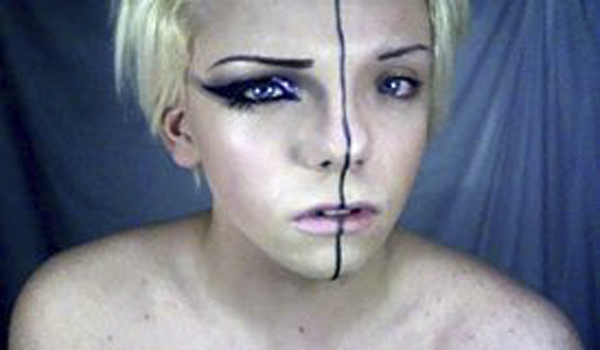

She loved the videos so much that she started making her own. Stef was looking for a way to survive and found that in speaking to the camera. She explains, “That’s how I learned to talk to people, talking to a camera. It was my friend. It was everything to me and the internet quickly became my home. Having that place to create something, to give it to people and to have them receive it and talk, it just felt good.”
Creating content allowed Stef to explore who she was with people. She says, “I could do that in private, but it’s not the same. Having that experience with people, even though they weren’t right in front of me, was so important. It’s so important for anybody to be themselves around people because that’s how you form a sense of self.” Through her videos, Stef set out to create a maternal feeling between her and the viewer, building a community based off of shared kindness and shared family. The community she became engaged in was initially small, but it was one that she could relate to. She says Instagram is where she had the most real-time interaction with people, where she could immediately engage with them. Largely made up of young queer people, many who were growing up in small towns, this online community gave Stef meaningful, supportive social interaction with people who were outside her immediate family.
Reflecting on her love of makeup, Stef says that “I understood I liked makeup, not because I liked doing it for other people, but because it allowed me to transform. It was a medium for me to express myself and explore art, and even more importantly, it was a way for me to explore my gender, which I didn’t get, until I did.” Her makeup is reflective of how she feels inside. “A lot of makeup is not a bad thing,” but initially, Stef believes that she was using makeup to replace herself with someone else, altering her features to look like someone else. Makeup was a strong tool for becoming a different person.
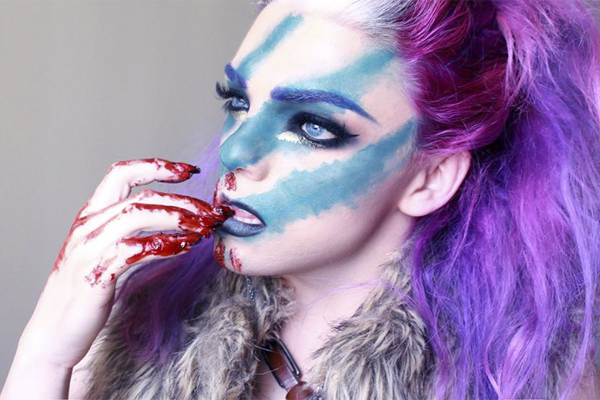
Two days after graduating from high school, Stef moved to Toronto to go to school for makeup. Being in Toronto gave her the opportunity to meet and interact with a wide variety of people. While working at Shoppers Drug Mart, Stef met a trans woman who would come in for makeup help. The more she spoke with this woman, the more Stef realized that it sounded like her feelings. At the time, there wasn’t any content on the internet specifically for trans women, and this customer gave Stef the vocabulary to clarify her identity and helped her get in contact with a doctor and set Stef up with the resources she needed.
After moving to Toronto, Stef continued to make videos in her spare time. One, called My Face: Waardenburg Syndrome, went viral. (It currently has almost 10 million views.) In it, Stef talked about her experiences of growing up with Waardenburg Syndrome, how she had felt about her appearance in the past and how she had grown to love the way she looks, not in spite of her unique features, but because of them. The video’s success made Stef realize that making videos was where her passion lay, not makeup. She quit her makeup jobs and started making videos full time, building a career as a digital creator.
Part of Stef’s philosophy is to give back to the community that has given her understanding, knowledge and hope. She wanted to give back in a way that hadn’t been done. As a result, she decided to use her online platform to document her transition, providing a very transparent “this is what you’re going to experience,” kinda thing, expanding the knowledge on trans people and transitioning that was available on the internet. Stef shared her surgeries in great detail, including some surgical footage.

It was important to her that people knew what was real and that others would know what to expect if they were to have the same kind of transition surgeries. Stef views every surgery she’s had as reconstructive. She says, “I view them as undoing the damage done to me by the wrong puberty. As a trans person, as a trans woman, I went through a testosterone-based puberty, which was incorrect for me. It wasn’t about being pretty, it wasn’t about being glamourous, it wasn’t about being perfect, it was about being understood. When I walked into a room, I wanted people to receive me as I am, not who they thought I was.”
Stef got to the point where she felt that her life was super together. She says, “I felt like I created this beautiful image of who I was and what I wanted to do. I felt stable and secure. All put together.” Then out of the blue, she got a call from her mother. Stef’s father had left. Stef says, “I always relied on knowing my family was stable. I feel like I had a good childhood. I did have a good childhood with them, but when that happened, it was like a schism in my mind. Something shifted so dramatically and I felt it physically.”
The news caused the return of Stef’s eating disorder from elementary school. Initially, the eating disorder had developed when Stef hit puberty before everyone else. She says, “Disregarding the fact that I was hitting puberty as a trans person who didn’t know they were trans, puberty alone is traumatic. I also had Waardenburg Syndrome to deal with. I had these confusing thoughts about sexuality and gender to deal with. I had acne. I was getting chubby before other people. I was taller than other people. I just felt like a monster. I felt so wrong to be anywhere.” She felt isolated and abandoned and alone and she needed a friend. Stef explains that the eating disorder became a friend to her. She learned to trust it and to work with it.
While the eating disorder had gone away in her early adult life, when her father left, it came back with a vengeance as severe bulimia. She started abusing laxatives, taking up to 20 pills a day. Stef also started to engage in other self-destructive behaviours including doing drugs. She thought she was experimenting as people in their 20s do. Her destructive behaviours lead to mental health issues that went untreated because Stef wasn’t acknowledging them. She says, “I was very self-destructive and that came out in the way I behaved, in the way I was on camera and in the way I would interact with people.”
The change was visible to her followers. Her YouTube channel became more about the way she looked and it twisted into something that she is not proud of. Her followers started to ask her to get help and she responded to them with hurt. Her mother begged her to stop taking laxatives. Stef told her she had it under control. She kept searching for things that would transform her life, but nothing ever did. The final thing she tried before getting real help was a road trip.
The idea was to go on an indefinite road trip and live in the car on the road to be wild and free. Stef describes it as a “very romantic idea of it,” but she was literally running away. Running away from her responsibilities, from her bills, from her job, from the people who cared about her and who were telling her to get help. The trip lasted four weeks and she spent the entire time trying to impress a person who was never going to give her what she needed from them. Stef learned that she had a habit of craving male attention, which she realized too late—after she had spent every dollar in her bank account, after she had maxed out her personal and business credit cards.
She was left with nothing. The friendship ended. The project ended. Stef was alone again. She couldn’t even buy food. She couldn’t even have the eating disorder. Stef hit rock bottom in Las Vegas where she didn’t even have money to gamble. She was on a live-stream begging for food when she thought “Oh my God, I have fallen so far.”

She remembered a time when she had done good things and was helpful and inspiring and she wanted to get that person back. She had to take care of herself. She realized, “I had to show myself compassion. I had to take care of myself like I would take care of my best friend.”
Stef returned to Toronto and started a treatment program for her eating disorder, which she describes as the best thing she’s ever done for herself and for the people who care about her. She says, “I think I was suppressing, not just the bad feelings, because you can’t pick and choose which feelings you’re suppressing with bad coping mechanisms. I think I was suppressing all of my feelings and it left me feeling very empty. Now I’m capable of feeling things again.”
The treatment program was very strict and worked to get Stef on a regular eating schedule so her body could function again. She had to eat certain portions at certain times and learn everything about eating. She says, “I really wanted to get better and I trusted the process. It completely changed my life and I feel a lot like I used to.
“I kind of saw myself as two people. I saw who I wanted to be and I saw who I was in that moment, the person who had been so hurt by me, and I saw the person I wanted to be taking care of me now. And I tried to put that into action. I tried to be the person I wanted to be and take care of the person I was.

“We quite often abuse ourselves. We don’t treat ourselves with any degree of kindness and I think that is really quite horrible. So now I try to practice self compassion. Practice understanding with myself. Not treating myself like a rag doll. Not treating myself like I’m disposable because I am not. None of us are.”
Stef believes that “we’re all works in progress,” and likes to think of us all as paintings. We use the tools that we are given to paint our picture. They might not always be the best tools; you may be going through a dark time, so it’s not a soft brush, it’s a palette knife and half-dried paint.

But Stef believes that “with self kindness, taking a step back, taking care of yourself and giving yourself that compassion, dried paint becomes fresh paint pretty quickly. Self-compassion and self-kindness are the best tools we have at our disposal even in awful times.” Stef says she’s learned that “it’s relatively easy to be kind to others, but to recognize when you’re hurting yourself in ways that aren’t clear and then to be kind to yourself in ways that are clear,” is instrumental in healing.
Returning to her love of makeup was a part of Stef’s journey to self-kindness. Through self-kindness with make up, Stef was able to accept her features again. To embrace them and play with them, feeling joy in them instead of feeling like she needs to fix something. She continues to encourage others to use makeup in this way believing “beauty should not be about a standard. It shouldn’t be about pursuing a certain look or looking like another person. It should be about being whoever you are and emphasizing that.
“Now, when I’m letting in these better influences and these healthier things, these better coping mechanisms, good strategies for caring for myself, self kindness, my self image is a lot better. It’s a lot warmer. There’s a little yellow glow in there like a little flame, a nice fireplace in the winter. That’s who I want to be. I want to be a nice fireplace in the winter and I think I see myself that way now, but it took awhile.”
While not immune to terrible comments that people sometimes make online, Stef sees the online community overall as a place where you can build a community of kindness. She advises, “Try your best not to pick out the bad comments and focus on them. It’s so easy to [focus on the negative], but there’s so much overwhelming kindness that can happen as well, on Instagram or anywhere online. It’s so easy for us to ignore the 90 nice things and look at the one bad thing, but if you’re 90 to 1, good to bad, you’re doing well.”
Stef continues to work hard to make sure that the right things influence her. She believes that “anybody who has any kind of creativity is influenced by people or muses or events. I try to let in the right, helpful and positive influences, but for a long time I was letting in a lot of ugly and a lot of destructive and hurtful things and it was coming out in everything I did. I try now to be very mindful of the things that are influencing me or what I create or how I behave because influences matter more than you think.”
Update: Stef has put her makeup videos on hold and is currently enjoying life as a gamer and says, “I’ve never been happier!”
Instagram: @stef.sanjati

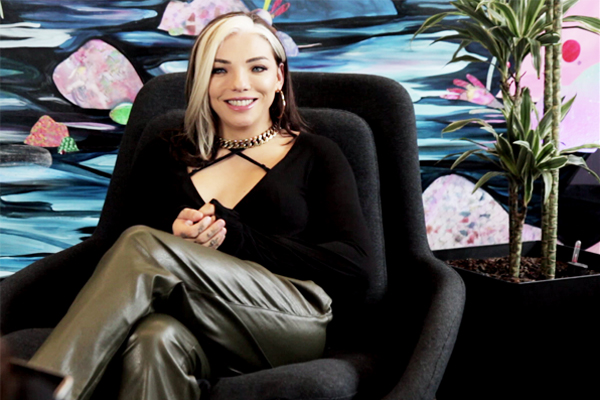
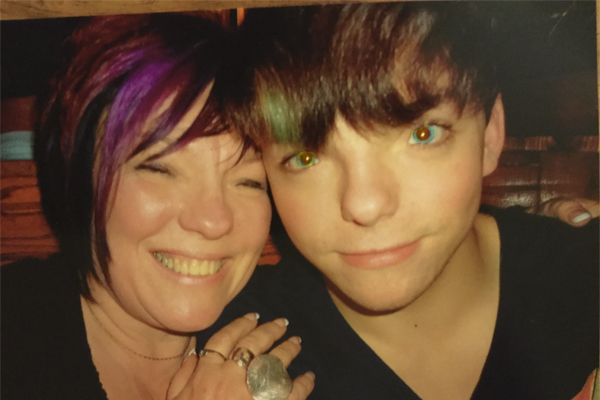
Comments are closed.